SMALL TEAM, BIG MOVE
Under-threat Cape wild horses returned to their wetland home
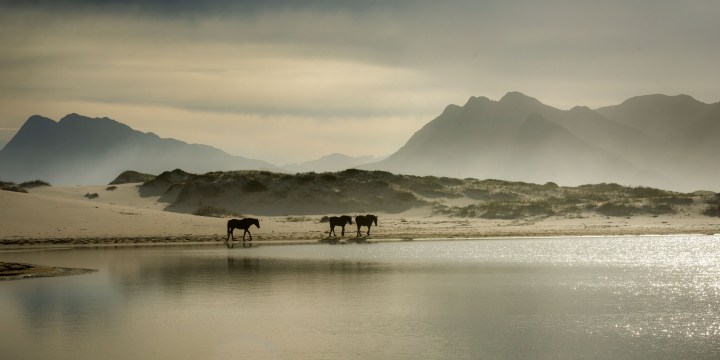
After many months of planning the free-roaming herd near Hermanus has been safely moved back to its original home near the Bot River estuary.
It’s been an incredible journey with many anxious moments, but they are home – and they are safe.
That is the heartwarming news from Leanne Dryburgh and her team of wild horse volunteers. They have managed to return a group of free-roaming horses from an area near Hermanus to their original wetland home near the Bot River estuary in the Western Cape and have been keeping a watch over them since their arrival.
A few weeks ago, Daily Maverick highlighted the threats faced by this particular group of wild horses and the urgent need to move them. Since then the interest in their well-being has gone viral.
“We knew that it was not going to be an easy operation and that the stress factor was going to be an issue when it came to loading the horses,” Dryburgh explained. “But we have a very experienced team. For something like this you need patience, compassion, skill, an understanding of the herds and their dynamics and, above all, cool heads!”
On 18 February at 7am the Fisherhaven herd was released back to its original home and back to safety.
“It took our very small team (with our ever-devoted husbands) the best part of a night and a day… to move them. After many months of planning, it was amazingly seamless. The horses arrived calmly and without any injuries. It was almost as if they knew we were helping them.”
Their destination was a stretch of deserted privately owned land in the Bot River area as well as part of the Rooisand Nature Reserve belonging to CapeNature.
“As in any grouping of wild animals there will be intermingling between the Fisherhaven and Rooisand herds,” said Dryburgh. Young stallions aged about four will be kicked out of one herd and go to another in search of fillies and mares, and chase away the older stallions. We keep a record of these movements and the new progeny, which is an important part of the monitoring process, but always from a distance.”
The Fisherhaven wild horses were a breakaway group from the original Rooisand herd of wild horses that have roamed freely in a protected area on the Bot River estuary for more than a century.
With the recent acceleration of development in the Hermanus area, the small group needed to be returned to its Rooisand family of 28 horses as quickly and safely as possible.
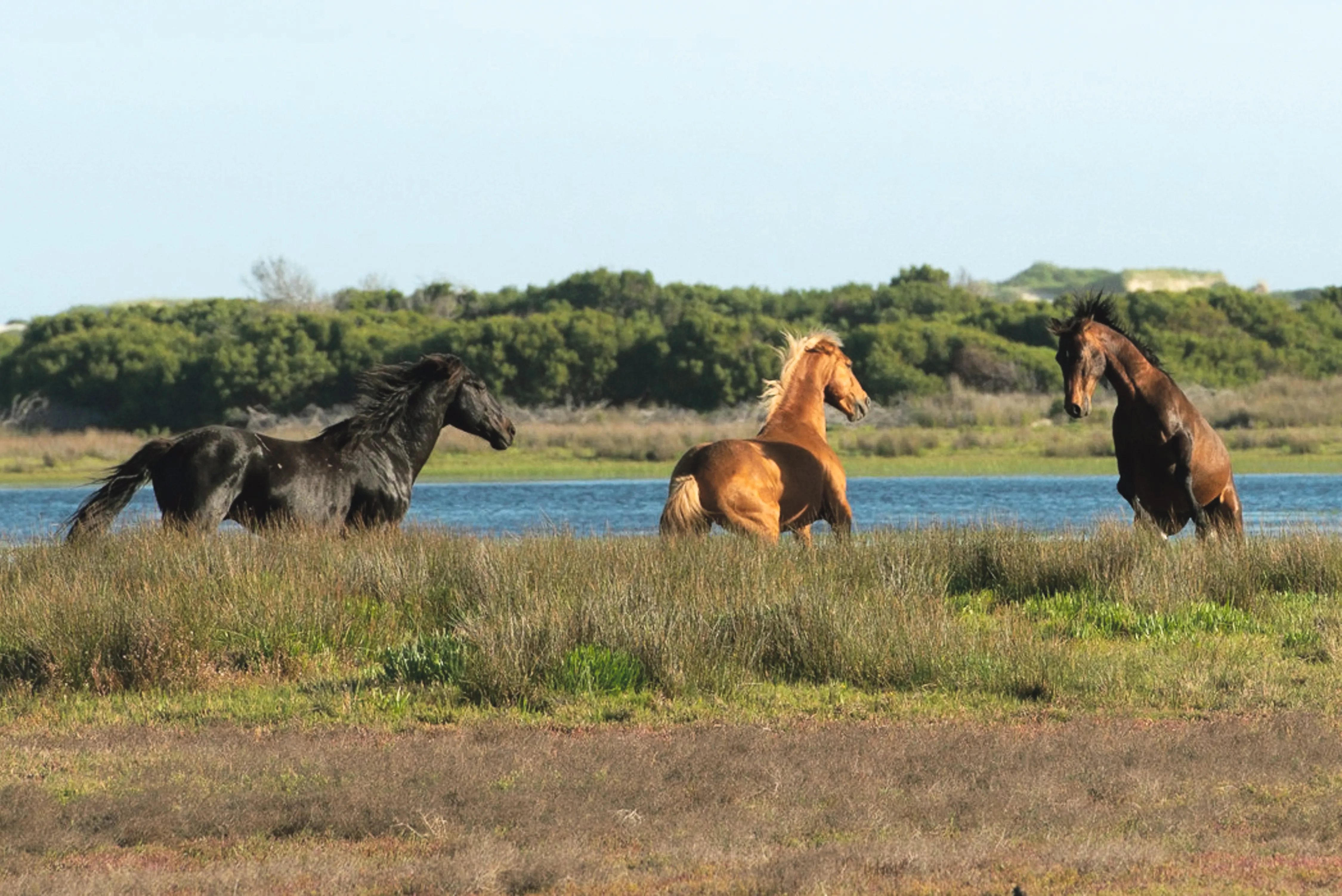
It took the small team the best part of a night and a day to move the herd, said Leanne Dryburgh. (Photo: Leanne Dryburgh)
Said Dryburgh: “They are currently roaming right where we hoped they would, away from humans so they can settle into the environment and hopefully start a new chapter in their lives. The mission of our team has never wavered – to keep these magnificent creatures free-roaming and at a respectful distance from humans. They have proved that they survive incredibly well on their own – in their vlei. We need to keep it that way. They are a national treasure.”
Through the years there have been many committed volunteers who have kept eyes on the herds and reported anything untoward. This, says Dryburgh, has been vital in preserving and protecting their habitat, and helping to ensure that they are kept free-roaming for future generations.
“There is also a group of ‘patrollers’. These are the ‘feet on the ground’ who respond at any time of the day or night. Every single person who reports watches from a distance, emphasising the importance of noninterference, which plays an important role in their survival.”
It won’t be an easy task meeting all the challenges that come with protecting the wild horses, she says.
Read more in Daily Maverick: Free-roaming wild horses in severe danger as habitat shrinks, traffic accidents rise
“We need to fix fences, put in a cattle grid and put up more signage to educate people, but we remain positive that we will achieve all our goals. The fences and cattle grid will help ensure their safety, but the education is the most important. People really need to admire from a distance.”
Although the proceeds from Dryburgh’s annual calendar sales raise enough money for basic signs and medicines from the vets (the vets donate their time and never hesitate to come when necessary), this move, she admits, was a mammoth undertaking that came at great expense. The move cost R65,000, and Dryburgh managed to raise R66,000.
It takes 70 days for animals to be rewilded. It is more than 70 days since Daily Maverick first highlighted the plight of the Fisherhaven horses. “They haven’t tried to move back,” she says. “I think we can safely say their wild heritage has been restored.”
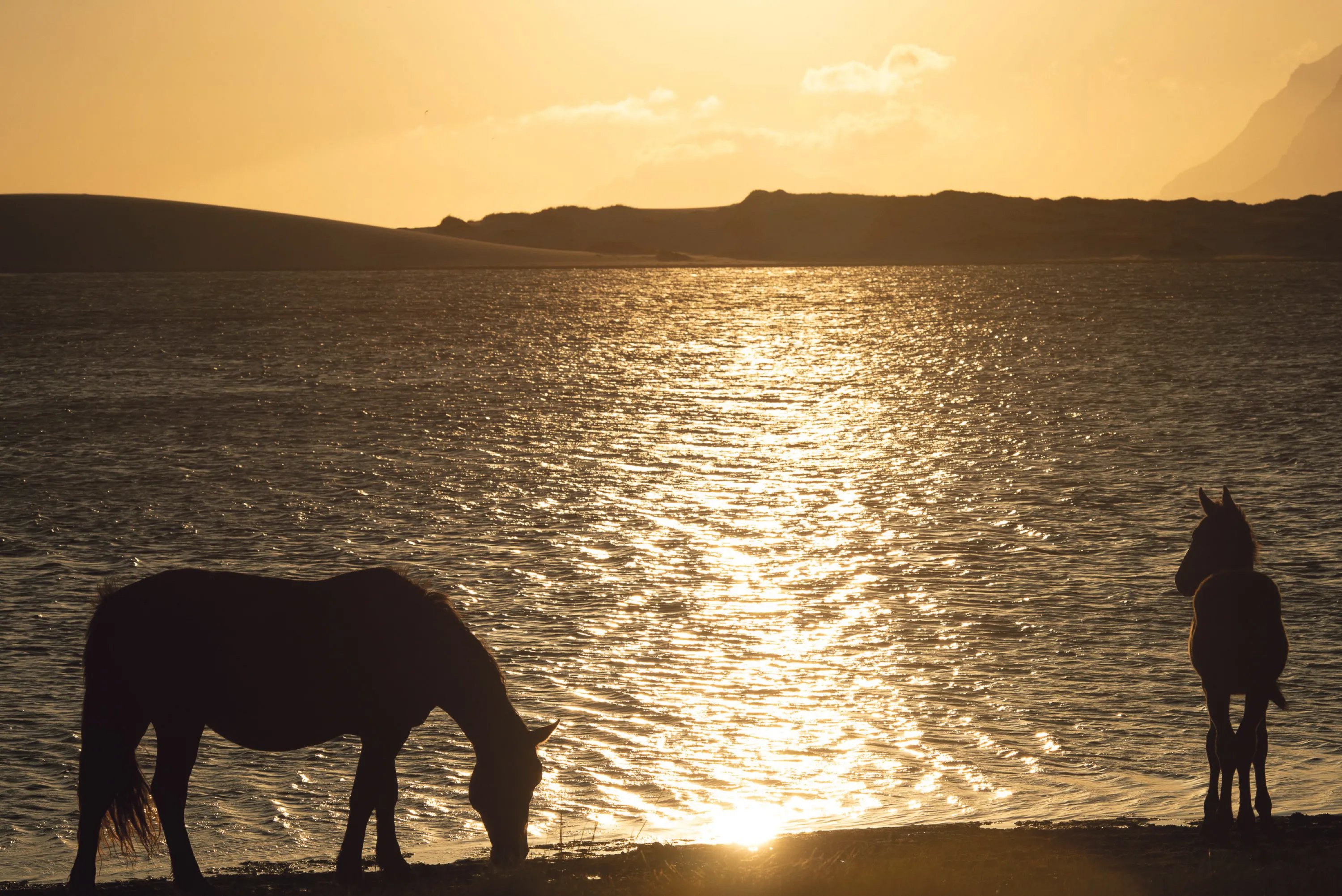
Photo: Leanne Dryburgh
Education
Educating is the most important part of their mission.
- Look – don’t touch. If they approach you out of curiosity, clap your hands and walk away;
- Keep a distance of at least 50m. Animals have a comfort circle. When you enter their space, the dynamics change and they no longer behave naturally;
- Do not feed them. They do not need any other food than what they graze on naturally; and
- Let them roam free! Help us to help them.
The most disturbing thing Dryburgh has recently seen, and is seeing more and more of, is people trying to get close to the wild horses. There are two huge problems with this, she says. First, if the herd is being tamed, it becomes more vulnerable. Second, the herd dynamics can change in a heartbeat, and every animal in that herd reacts to the lead stallion or lead mare. If people are in the way, say sitting on the ground, it could make them vulnerable.
Ideas
- Inclusive buy-in from organisations like the Southern African Historical Society;
- More signs and volunteers to educate and raise importance on the ground; and
- Raised platforms, similar to those in Kirstenbosch, where people can view the horses without interfering with them.
About Dryburgh
As a young girl she says she spent hours in her dad’s darkroom, watching the images magically appearing and dreaming of becoming a photographer.
“I spent most of my youth swooning over Life and National Geographic magazines. In 1989 my dream became a reality when I was accepted to study a three-year diploma in photography in Durban… My camera is an extension of my core, my being.”
Dryburgh began her career as a wildlife photographer in the Okavango Delta of Botswana, and sold those images to help support and create awareness for the Endangered Wildlife Trust.
She currently lives with her photographer husband Peter Hassall in a small wooden home under an old milkwood tree on the Bot River estuary in the Western Cape.
“I became aware of the wild horses when I moved to the Overberg in 2013, and in 2016, on a long walk near our home, we stumbled across a lone injured stallion. I got hold of the ‘horse watchers’ and learnt that it was Brassy, who had separated himself from the herd to heal after challenging another stallion. I joined the horse watch group, and have been involved ever since.”
Dryburgh is in the process of producing a book on the Rooisand wild horses. DM
This story first appeared in our weekly Daily Maverick 168 newspaper, which is available countrywide for R35.
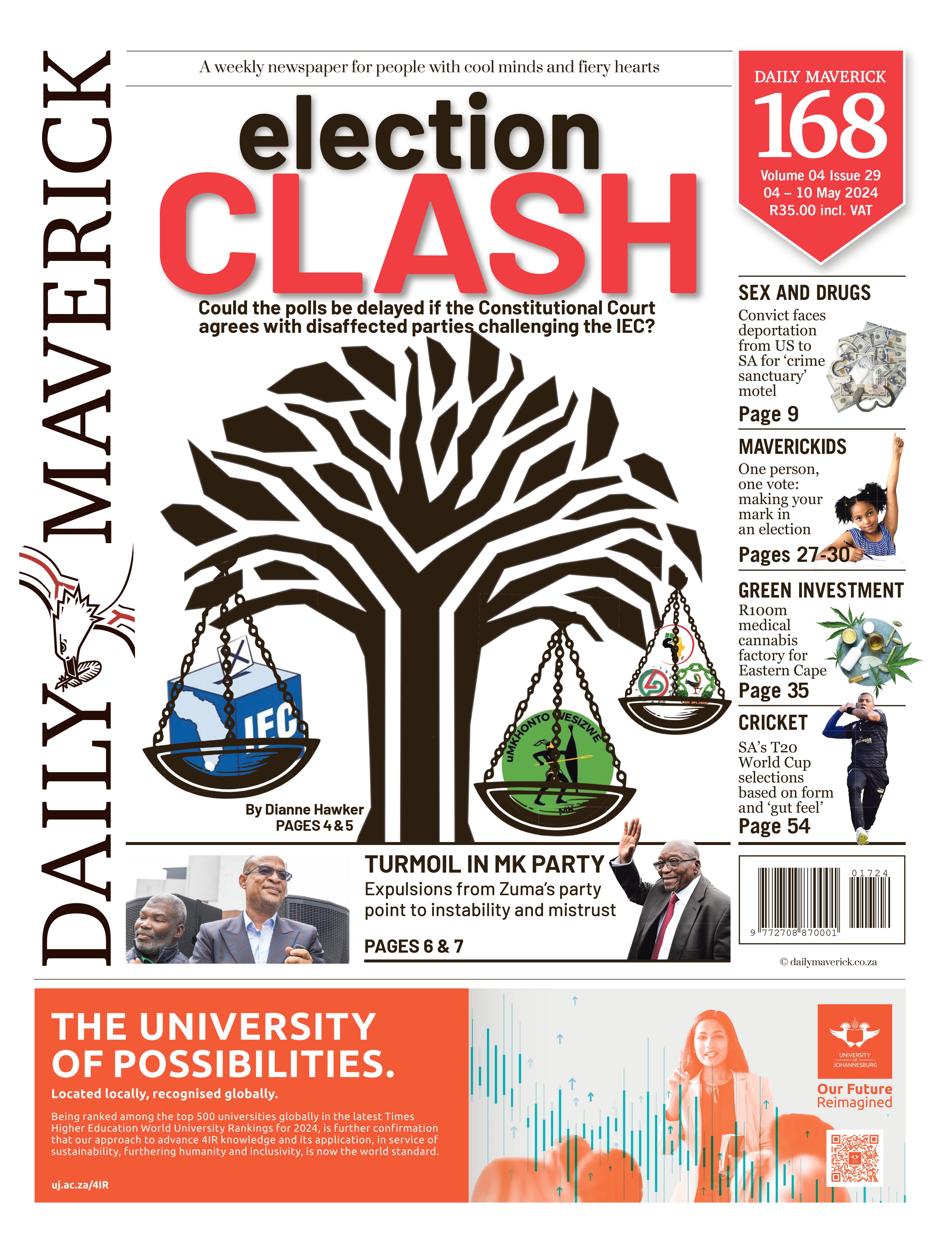











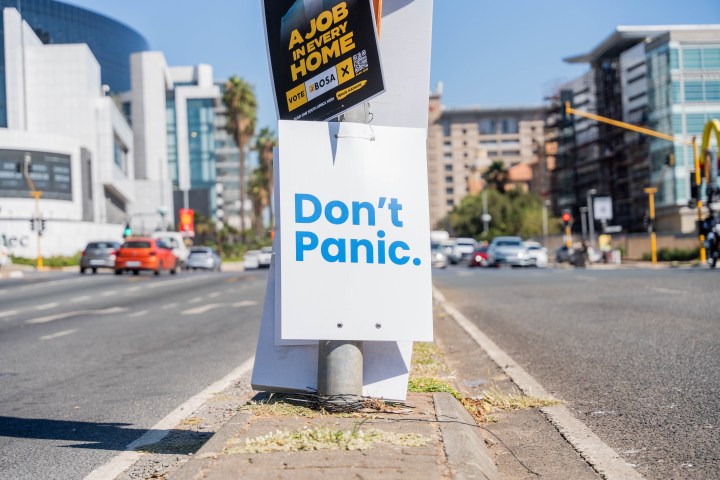


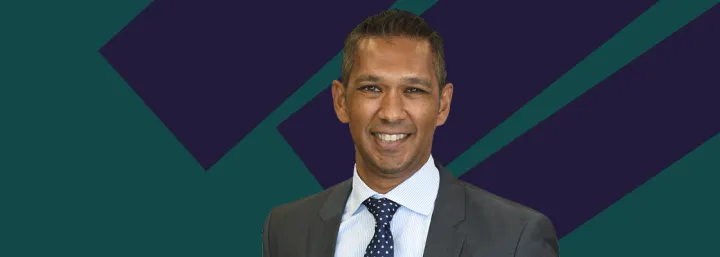
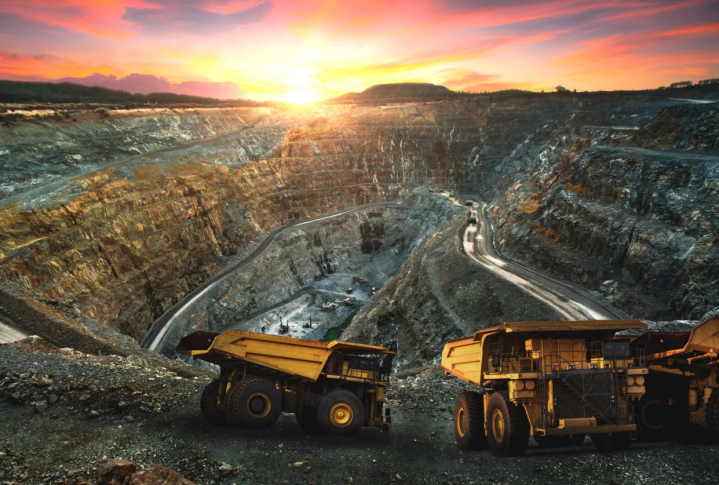




Great work
Very inspiring. Such a change to read an article with so much positivity.
A lovely heart-warming story amongst the normal daily “bad news” reads! Thank you.
How about some context ? Map of the area ? How many horses ?
Another good news story, much appreciated.
I have just re-read Roy Campbell’s Horses on the Camargue for the first time in 60 years. Magnicent. In light of this article by Liz Clarke, and if you love horses, do yourself a favour and read it.
Nice to learn that we have our own brumbies in SA. Thanks, DM.
This is what I want to read, thank you!
Thank you Leanne Dryburgh, for using your time on earth so meaningfully, and likewise, Liz Clarke, for sharing this story.